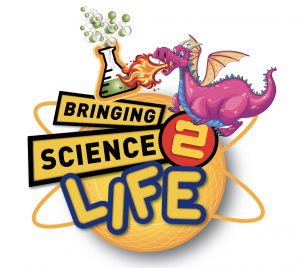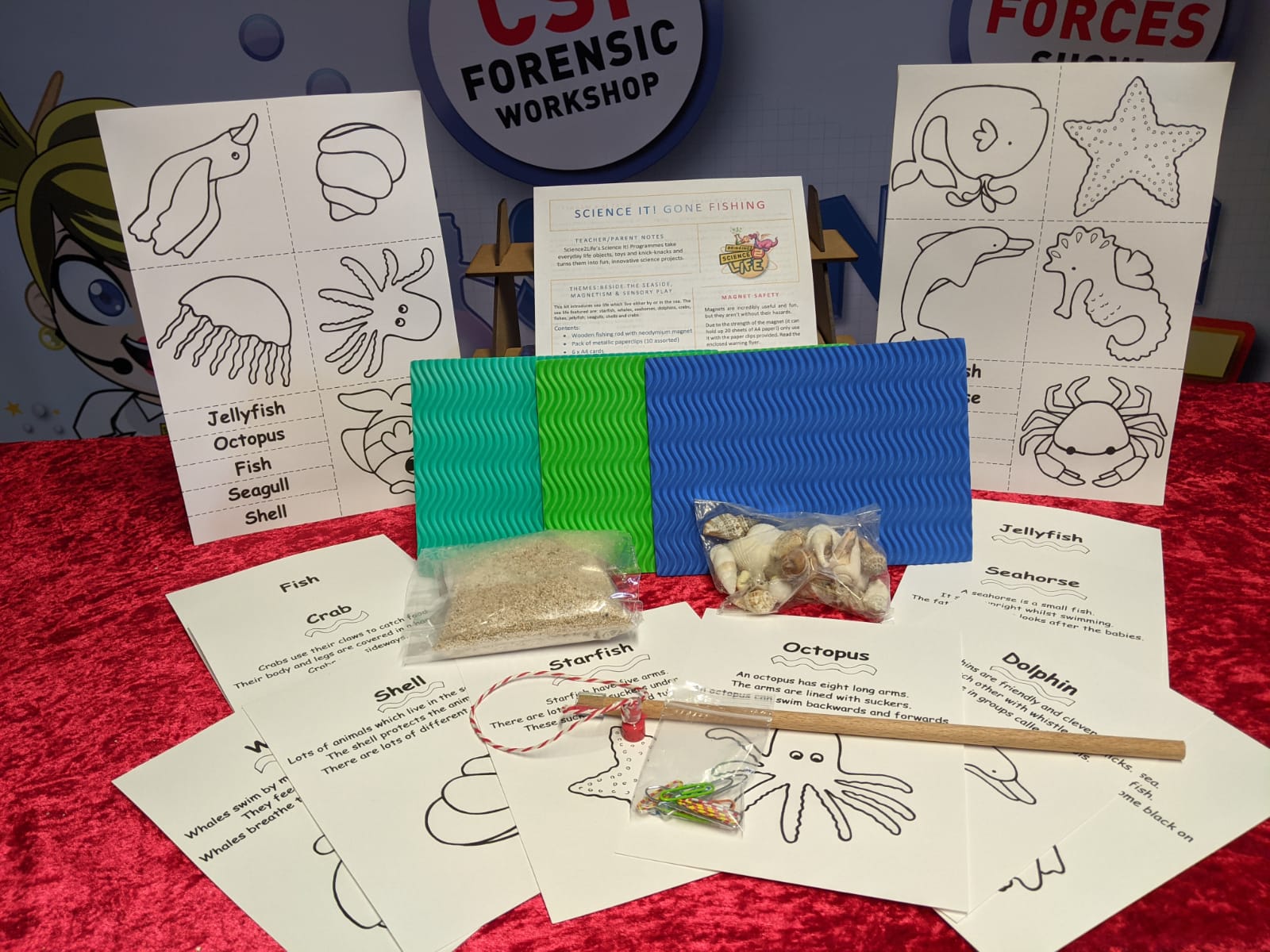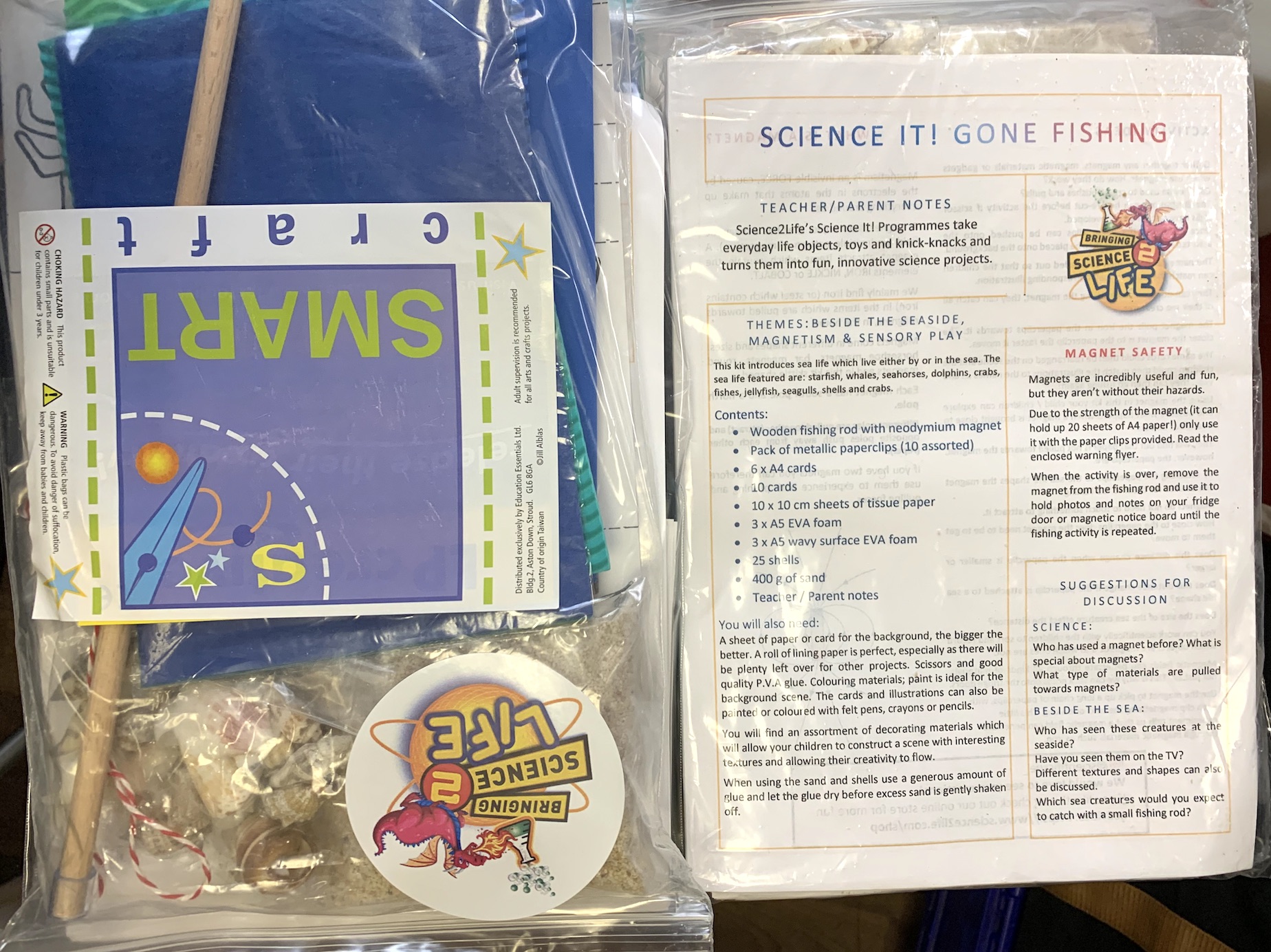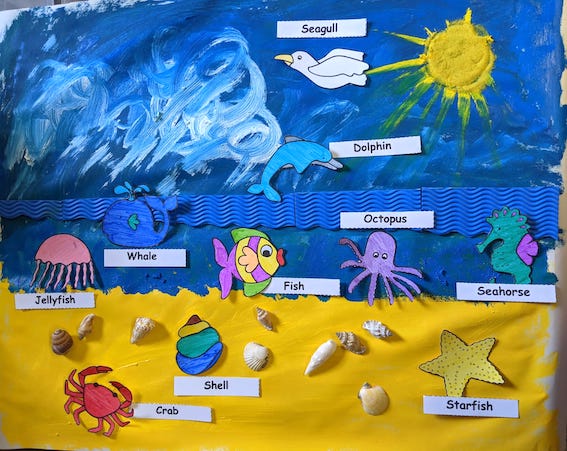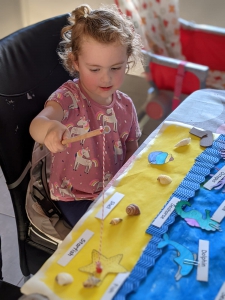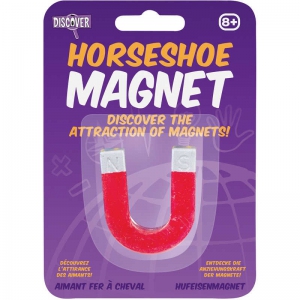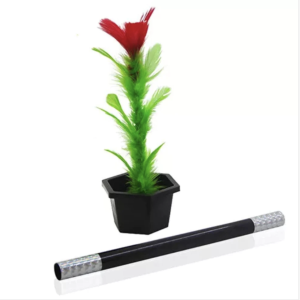Description
SCIENCE iT! GONE FISHING!
Science2Life’s Science iT! Programmes takes everyday life objects, toys and knick-knacks and turns them into fun, innovative science projects.
In this activity Scientific Sue uses a skittle magnet and beech wood rod to build a fishing rod. The fishing rod and paperclips are then used to bring a ‘beside the seaside’ activity pack 2life. This pack encourages arts and crafts, colouring in, cutting skills, letting their imagination flow when creating their scene and then “fishing” for the sea life once your project is complete.
THEMES:BESIDE THE SEASIDE, MAGNETISM & SENSORY PLAY
This kit introduces sea life which live either by or in the sea. The sea life featured are: starfish, whales, seahorses, dolphins, crabs, fishes, jellyfish, seagulls, shells and crabs.
Did you know? The plural of fish is usually fish. When referring to more than one species of fish, especially in a scientific context, you can use fishes as the plural.
£12.50 …. want more wands? Options for 2, 3 or 5 available on purchase.
Contents:
- Wooden fishing rod with neodymium skittle magnet
- Pack of metallic paper clips (10 assorted)
- 6 x A4 cards
- 10 cards
- 10 x 10 cm sheets of tissue paper
- 3 x A5 EVA foam
- 3 x A5 wavy surface EVA foam
- 25 shells
- 400 g of sand
- Teacher / Parent notes
You will need:
- A sheet of paper or card for the background, the bigger the better. A roll of lining paper is perfect, especially as there will be plenty left over for other projects.
- Scissors and good quality P.V.A glue.
- Colouring materials; paint is ideal for the background scene. The cards and illustrations can also be painted or coloured with felt pens, crayons or pencils.
When using the sand and shells use a generous amount of glue and let the glue dry before excess sand is gently shaken off.
MAGNET SAFETY
Magnets are incredibly useful and fun, but they aren’t without their hazards.
Due to the strength of the magnet (it can hold up 20 sheets of A4 paper!) only use it with the paper clips provided. Read the enclosed warning flyer.
When the activity is over, remove the magnet from the fishing rod and use it to hold photos and notes on your fridge door or magnetic notice board until the fishing activity is repeated.
SUGGESTIONS FOR DISCUSSION
SCIENCE:
Who has used a magnet before? What is special about magnets?
What type of materials are pulled towards magnets?
BESIDE THE SEA:
Who has seen these creatures at the seaside?
Have you seen them on the TV? Different textures and shapes can also be discussed.
WHAT IS A MAGNET?
Magnetism is an invisible FORCE, caused by the electrons in the atoms that make up everything around us.
Magnets come in different shapes and sizes: horseshoe magnets, bar magnets, round magnets and in this kit a skittle magnet.
Each magnet has a south pole and a north pole.
Different poles are pulled together (attract) and opposite poles push away from each other (repel).
Magnetism is an invisible FORCE, caused by the electrons in the atoms that make up everything around us.
Science2Life’s Science iT! activities and programmes
Children love to be engaged in learning, especially through interactive projects that they can really get involved and be hands on with.
Science2Life’s Science iT! activities and programmes are part of our STEAM Academy. The activities use everyday life objects, toys and knick-knacks and turns them into fun, innovative, hands-on experiences designed to encourage children to:
- discover the amazing world of science and engineering
- to perform engaging activities that show how science and engineering is at work in their everyday lives
- to foster a lifelong love of science and engineering
- to give a basic grounding in scientific concepts and scientific thinking
- to increase children’s motivation to learn and
- enhance their perception, creativity and logic.
Hands-on learning is learning by doing.
Children involved in our ‘Science iT!’ activities and programmes are introduced to various STEAM learning methods and activities. Our creative programmes involve learning activities that require active thinking and experimenting to find out how things work. We all know how curious children are about the world around them and how they love using the word ‘why?’
The aim of our activities is to provide optimal learning opportunities that strategically help children grasp mathematics, engineering and science concepts.
The inclusion of the arts component into STEM makes it more fun to learn, and more approachable to children.
Art education allows children to learn things in a more open-ended way and make them applicable to real life.
Links to the curriculum
All of Science2Life activities can be used to entertain children – however they have been created with the curriculum in mind, so are perfect activities to generate mesmerizing examples of the topics they can be used to explore.
All of our Science iT! activities can up scaled-up to be used in workshops within the classroom, for festival and birthday celebrations, which provide opportunities for children to collaborate on initiatives, explorations and creations.
The idea behind our Science iT! activities is to ignite children’s natural innate curiosity about the world around them (and the items in it) and to channel their enthusiasm for scientific discovery as early as possible.
Currently Science2Life have the following Science iT! activities:
- The Magical EVANESCO Spell
- The Magical AMORTENTIA Spell
- The Super Bouncing Bubble Kit
- Make your own Fossil Kit
- Colour Changing Bracelet Kit
- Pneumatic Monsters Activity
- Creative Circuits
- The Magical Wandarama
- Gone Fishing
- The Jitter Bug
All of the above can be upscaled to become workshops. Interested? Give us a call!
Scientificsue@science2life.com
+447970884728
Note: All of Science2Life’s STEAM ACADEMY shows and workshops are designed to not only motivate and fire the spirit of discovery within your children but also ignite curiosity in their minds.
For more information on our shows visit our website: https://www.science2life.com
